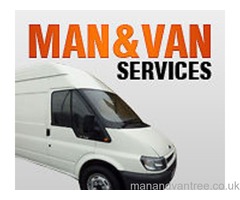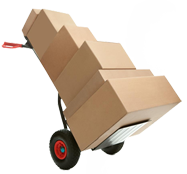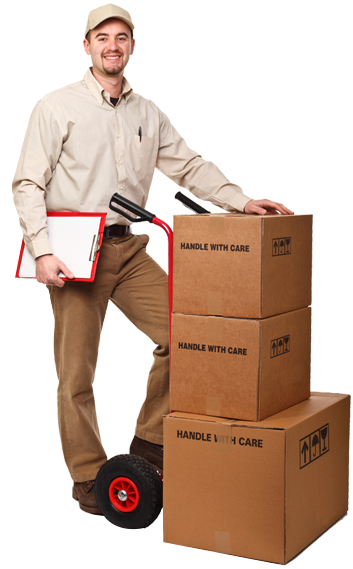Man And Van Dublin Collections

Man & Van Rubbish Clearance Guide
Man & van Rubbish Clearance is a cost effective, environmentally friendly and simple method of getting rid of your bulky waste, however surprisingly many people never even consider it. When you use it, here is our supreme 2020 guide to how it works and the crucial questions to think about.
FIND MAN WITH A MAN DUBLIN

Man & Van Rubbish Clearance meaning
Man & van rubbish clearance is typically specified as the loading and removal of large waste from a property by a man & van team. The service covers collection of waste from anywhere on the residential or commercial property, filling it into a truck, sweeping up any loose product, and delivering the waste to a licensed disposal center.
Who supplies man and van rubbish clearance?
A range of organisations provide the service. These include specialist man & van rubbish clearance companies (of which AllRemovals is certainly our preferred!), one-man bands, avoid hire companies, standard house moving companies (who eliminate scrap at the same time as doing your move), charities, and your local council.
Every council is required to offer a subsidised collection service for large family products to its citizens. The service is generally restricted to furniture, appliances and other family ‘scrap’, rather than home builders and home enhancement waste. This is due to the fact that the latter is thought about ‘trade waste’ and not something the council must subsidize.
Private waste business, although most likely to cost more than the council, take the full range of bulky waste (instead of just home scrap) and, unlike council crews, their groups will collect from anywhere on the home (consisting of upstairs and the back garden). Plus they will be readily available at much shorter notice and deal narrow arrival times, so you do not need to linger all day. Rates of one man bands might be more affordable than bigger, professional organisations. But if you do select a one-man band always inspect they have a waste provider license and their insurance coverage covers them for waste removal.
Lots of charities like British Heart Structure provide a free collection service for good quality, truly resalable products (which for sofas and upholstered furniture likewise indicates having proper fire certification). Be sure to call them if you have anything decent. But for the stuff that you know is actual rubbish, please do not waste their or your time.
Waste types- what bulky waste types can be removed?
Large waste implies in the context of man & van rubbish clearance any non-hazardous waste that can easily be lifted by 2 individuals. This consists of builders waste, fly-tipped waste, bulky home appliances (including domestic fridges), furniture, bric-a-brac, carpet, plasterboard, garden waste and household junk. For waste health, security & licensing and insurance reasons, many companies will not remove the following hazardous products:
- Asbestos (read our guide on safe disposal of asbestos).
- Batteries.
- Clinical or medical waste, including syringes.
- Fluorescent tubes.
- Commercial refrigerators, freezers and a/c units.
- Gas cylinders and gas bottles.
- Hazardous & poisonous products.
- Oil, petrol, diesel.
- Paint & Cans of paint.
- Tyres.
Weight constraints- do I need to stress over how heavy the waste is?
Man & van clearance companies usually don’t like and aren’t best suited to tasks with great deals of really heavy demolition or excavation waste like rubble, cement and soil (typically described as ‘inert waste’). This is because their collection vehicles are typically light items vehicles. Light items lorries, although less expensive and simpler to run than heavy items vehicles, needs to by law never ever weigh more than 3.5 tonnes. An empty LGV team, fuel and truck weighs 2.0- 2.5 tonnes, which leaves 1.0- 1.5 tonnes capacity for the waste (this figure is called the automobile’s ‘payload’). That payload is great if the waste is a mix of bulky materials but not if it contains mostly inert waste. So, if you do have lots of really heavy, thick demolition or excavation waste, you will probably be much better deal employing an avoid.

Van sizes & types- what types are used and how big are they?
Similar to cars and trucks, vans vary substantially in size and type. The primary types of trucks and vans used for bulky waste are:.
- * Box Tipper- the most popular vehicle for large waste, a box or caged tipper (visualized above) has a solid or mesh box at the back to contain the waste and has a hydraulic tipper system to put out the contents when the van goes to the pointer. The volume of the box on a waste tipper truck is generally 10 cubic backyards- 14 cubic yards.
- Luton- a Luton vehicle has a large strong side box (typically constructed out of fibreglass to keep it light) at the back which extends over the taxi. This type of van provides great deals of storage space and is usually utilized by removal business when people move homes. It isn’t ideal for waste due to the fact that the sides aren’t extremely strong (so can get damaged when heavy items are included) and the absence of tipper implies the team needs to handball everything when they get to the suggestion. The volume of a Luton can differ extensively.
- Transit- transit vans are popular with shipment business and tradespeople as they are cheap, compact and easy to drive. They have sliding door at the side and a rear door. They do not have a tipping system so take longer to empty than a tipper but the sides are made from metal, so more robust than a Luton. In the context of rubbish clearance they are frequently utilized by people who offer other services at the same time, like shipment or a trade. Besides sluggish offloading, their primary problems for waste removal are low ceiling and likewise dust and grit from contractors’ waste getting stuck into the moving door system. Transit van volume are 8 lawns to 14 yards.
- Flatbed truck- flatbeds are trucks with a flat bed at the back with very low or no sideboards. They are developed to carry heavy products and favoured by scaffolders, contractors merchants and tool hire organizations. Due to the fact that the low sides prevent you from stacking lots of bulky items securely, they are not great for large waste (unless you are getting rid of lots of extremely heavy inert waste).
Labour- what labour is included?
The labour is a key element of a man & van rubbish clearance. The service and price consists of clearing the waste from anywhere on the property and filling it onto the van. It will typically also consist of a sweep-up. Although crews will typically be happy to break things down a bit to make them much easier to take or move up less area in the truck, do not expect them to carry out significant demolition work or dismantling (eg. sawing a sofa in half to fit through doors). Be prepared to pay more for their time and effort if you need this extra service.
Rates- how does pricing work and just how much should I expect pay?
Rates for rubbish clearance are based on the volume of large waste got rid of and cover the disposal, transport and labour charges. If you’re comparing rates and somebody is estimating fractions of truck, remember that trucks have various sizes and for that reason cheaper may not really imply better if it’s a smaller truck.
Note that a couple of special products- the most common are bed mattress, tvs and fridges- will incur a supplement because they require to be disposed of in a different way to basic waste and this costs the waste clearance business a bit more in disposal charges.
As a rough guide, a complete 14 backyard truck clearance should cost around EUR360 (EUR300 ex VAT) and 1/2 truck (ie. 7 cubic yards) around EUR220 (EUR180 ex BARREL). Collection of single furniture item must cost around EUR40- EUR50.
FYI, the national typical expense of a 6 cubic yard skip (prior to including license fees and parking suspensions if placed on a road) is around EUR226 (EUR188 ex VAT).
Collection time & location- do I need to be present when the rubbish is collected?
Offered there is access to the scrap and it is plainly recognized what products are to be taken and what are to remain, then there is no requirement for you to be present. Clearance business can gather from anywhere on the home as long as there is gain access to. You could leave the waste outside in an available place, for instance your front garden, to allow for easy gain access to if you can’t be present.
Collection size various- what if the real collection size is different to the size scheduled?
Then the collection team need to let you understand prior to they begin and charge or credit you the difference, if your collection size is bigger or smaller than you purchased. If the job ends up bigger than reserved and you ‘d choose to cancel, allremovals offers customers the choice of a refund.
Moving other products- can the team move my stuff from one area to another for me?
It totally depends on the company as to whether they’re prepared to move products for you. Normally, it’s not an excellent concept to utilize a rubbish business to move your stuff due to the fact that the vans can be unclean. On top of this, the teams are utilized to moving rubbish rather than important products meaning they probably will not take as much care as a professional removal company. We recommend visiting the British Association of Removers if you require an A to B removal service.
Untidy flooring- how to avoid rubbish messing up my drive or lawn?
Many business will provide the location a comprehensive sweep up prior to they leave. If some of your waste is especially untidy (e.g. debris, earth, damaged tiles) and you are worried about leaving it on your lawn or driveway before the collection, we suggest storing it in rubble bags or stacking it on a tarpaulin or ground sheet.
License- what sort of licensing is there?
To remove your waste a man & van firm or sole trader should be signed up with the Environment Agency or SEPA and have a valid waste provider license. They must also be insured to do the work and we advise if you are allowing crew into your home you request for photo ID and DBS checks (which used to be known as CRB checks).
Paperwork- should I expect any documents for the man & van waste collection?
The essential paperwork when somebody eliminates your waste is a waste transfer note. Strictly speaking if the waste is being collected from a domestic home then any type of written confirmation is sufficient however if the type eliminating your waste is a expert and experienced organisation then they ought to provide a waste transfer note as matter of course.
Disposal & recycling- where does the waste go?
When gathered, unless handed down for reuse, the waste will be required to a certified industrial waste transfer station where it is then recycled, sent to waste-to-energy or landfilled. Read more about bulky waste’s journey.
When to utilize and when not to utilize a man and van for bulky waste?
A man & van rubbish clearance is a fantastic way to eliminate a large range of large waste products from your home. Anything that’s too huge for your bin- from furniture, home appliances and bric-a-brac to flooring, DIY waste and contractors waste. In many instances the service is considerably cheaper than a skip and all the labour is included, so you can literally simply point and the waste will be gotten rid of from anywhere on the residential or commercial property.
The primary weakness of a man & van service is its inability to deal with big quantities of heavy, thick waste like soil and bricks, because of automobile weight limitations and also the time it takes to fill a lot of that sort of loose, messy material. In those circumstances, we advise employing an avoid rather given that weight is less of a concern and it’s also perfect for containment. Keep in mind if you do not have area at your home for an avoid, then think about asking for a wait & load service from your skip service provider rather.
Bulky waste suggests in the context of man & van rubbish clearance any non-hazardous waste that can easily be lifted by two people. Man & van clearance firms generally don’t like and aren’t best suited to jobs with lots of extremely heavy demolition or excavation waste like cement, debris and soil (typically referred to as ‘inert waste’). * Box Tipper- the most popular vehicle for large waste, a box or caged tipper (pictured above) has a solid or mesh box at the back to contain the waste and has a hydraulic tipper mechanism to put out the contents when the van goes to the pointer. They are not fantastic for large waste (unless you are eliminating lots of very heavy inert waste) because the low sides avoid you from stacking lots of large items securely.
Strictly speaking if the waste is being gathered from a domestic property then any kind of composed verification is sufficient but if the kind eliminating your waste is a professional and knowledgeable organisation then they need to provide a waste transfer note as matter of course.
Our Services:
- HOUSE REMOVALS
- OFFICE REMOVALS
- FURNITURE REMOVAL
- PIANO REMOVALS
- WASTE CLEARANCE & RECYCLING
- COMMERCIAL REMOVALS
Useful Links:





20

years of
experienceAll Removals is a reliable Irish company that aims to ensure a smooth moving experience to all of its customers.Our removal firm has a full Dublin coverage and serves areas in All Ireland too. We can help with cross-country (Ireland) and international removals as well.

we make it faster
With All Removals it takes few minutes to complete an appointment, secure and fast.
Available at your location
We cover all Dublin and counties around but at the same time we offer our services to almost all Ireland.
on time delevery
98% off all our appointment are exactly in time and our customers always save their time and enjoy.

